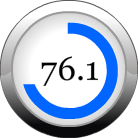Article Quality Checker
Problem: Low Quality Articles
 More and more people try to make a living by writing content online, hoping to sell products or make enough money from ads. Unfortunately, many articles are poorly written and just exist to promote a product or service (affiliate marketing) using keyword stuffed sentences.
More and more people try to make a living by writing content online, hoping to sell products or make enough money from ads. Unfortunately, many articles are poorly written and just exist to promote a product or service (affiliate marketing) using keyword stuffed sentences.
Low quality content has a short life though, Google's algorithms get smarter all the time and learn to differentiate worthless content from highly valuable insights. But Google and Search Engine Optimization (SEO) is just one reason why it is important to raise the quality of online articles.
5 Reasons Why Article Quality Matters
- Bad articles are a waste of time: Pointless 300-500 word articles about nothing will not only waste your precious time writing them, but also your valued reader's time. Think about the value that the article should provide first!
- Interesting stories will be talked about: The more interesting and unique the story, the more people will comment and share the article. Articles about popular topics or articles that provide some kind of new insight into a topic might be "link bait" and lure in many readers.
- User friendly articles rank higher: Google uses measures such as the bounce rate and the time users spend on a Web page to determine its quality. The more user friendly the article, the higher it is ranked by search engines. Using videos, images, and making the content easy to skim are important points to address.
- Good articles build trust: If you find ten spelling errors in an article and feel that it was poorly researched, you'll think twice before you read another article from that author. It is therefore important to always keep the quality up and provide value to the recurring reader!
- Bring your message across: A well written article is easy to read and can be understood without knowing jargon and abbreviations. There are several readability measures that can tell you how many years of school somebody must have attended to understand your text. If that number is rather low, you will be able to bring your message across properly.
Indicators of a High Quality Article
So what makes an article a valuable, high quality article? Among many other indicators, here is a list that the Article Checker uses:
- Interestingness:
- Catchyness of the title: Catchy titles such as "10 Secrets to Lose Weight" attract readers more than "Losing weight is possible, many have done it, you can too".
- Uniqueness: The more unique the content, the more information it contains. Duplicate or near duplicate content is also a big issue for search engines. Authors should therefore look into untapped territory or give new insights on a particular topic.
- Use of links: An article that provides backlinks to sources or further readings is usually more helpful to the user. Outgoing links also tell the search engine what the topic is about.
- Use of videos: Embedding relevant videos can catch the reader even more. There are millions of videos on YouTube about almost everything, finding something relevant should not be too hard for any author.
- Length: Longer articles usually indicate more work and dedication of the author and could be considered more interesting.
- Readability: Readability can be measured with scores such as the Flesch Reading Ease, the Coleman-Liau Index, or FORCAST. Many of these readabilty measures compute a number which resembles the number of school year education to understand the article. The lower the number the easier to understand the text. The measures are important since the concentration and focus of the reader can only be kept if the text is easy to understand and the message is clear.
- Skimmability:
- Paragraph length: Paragraphs should not be longer than 3 to 5 sentences or it gets harder for the user to skim through the text.
- Use of headlines: Adding headlines gives the user additional anchors when skimming through the text. One headline for up to 4 paragraphs is a good rule of thumb.
- Use of lists: Lists are easy to skim and digest. Authors should use them to break up texts.
- Highlighted phrases: Words or phrases that are bold, underlined, or italic jump out and can be used as anchors for the reader.
- Use of media: Images and videos help breaking up text and give the reader a quick impression what the text is about.
- Grammar:
- Spelling: Obviously, spelling errors are embarrassing and should be avoided completely.
- Style: There are some simple style errors that should be avoided altogether. For example, wordy phrases such as "are of the same opinion" can be replaced with "agree" or oxymorons such as "may certainly" should be avoided.
- Abbreviations: Try to avoid abbreviations whenever possible. At least they have to be explained once in the article or it becomes increasingly difficult to read.
How to Check the Quality of an Article?
The Article Checker is a free online services that lets you grade the quality of (your) articles. It will determine four subscores in Interestingness, Readability, Skimmability, and Grammar. Three to eight factors are taken into account for each of the subscores so the author can explicitly see in which areas he or she needs to improve. In each of the subscores, To determine the final article quality, all scores are weighted equally. It is not only possible to grade already published articles but also to check articles (by HTML text input) that you are still writing on.
The services uses the quality grading functionality of the WebKnox API.
But why don't you try it yourself, type in the URL of an article you would like to get graded:
Resources
